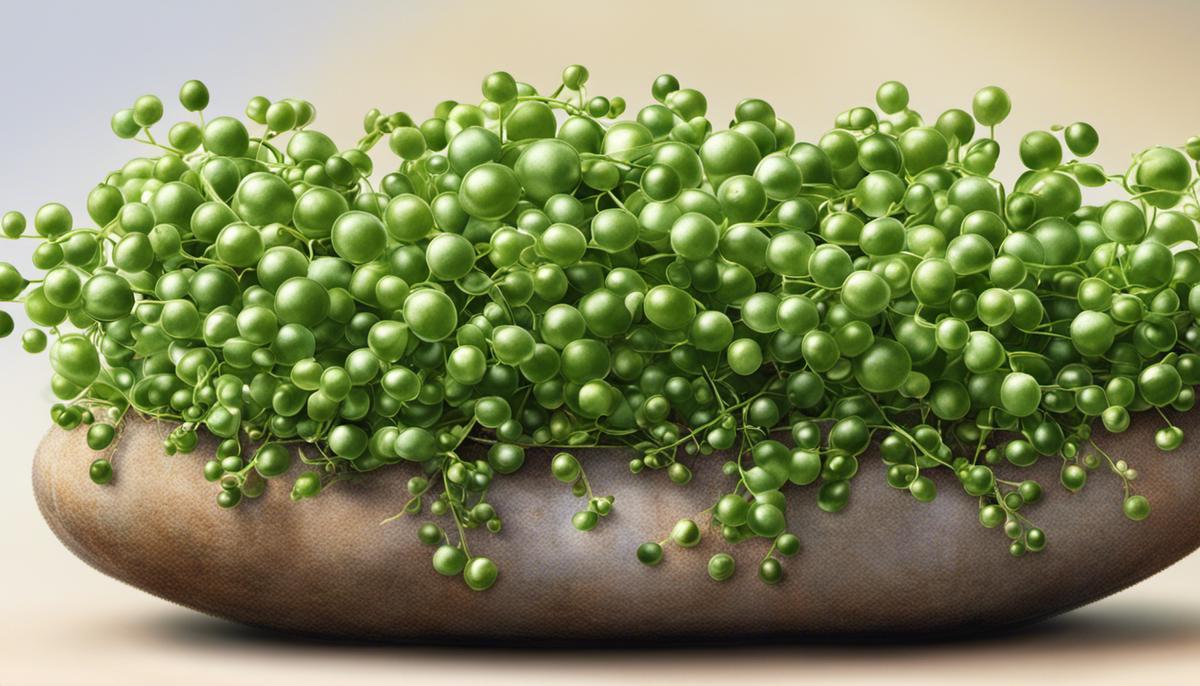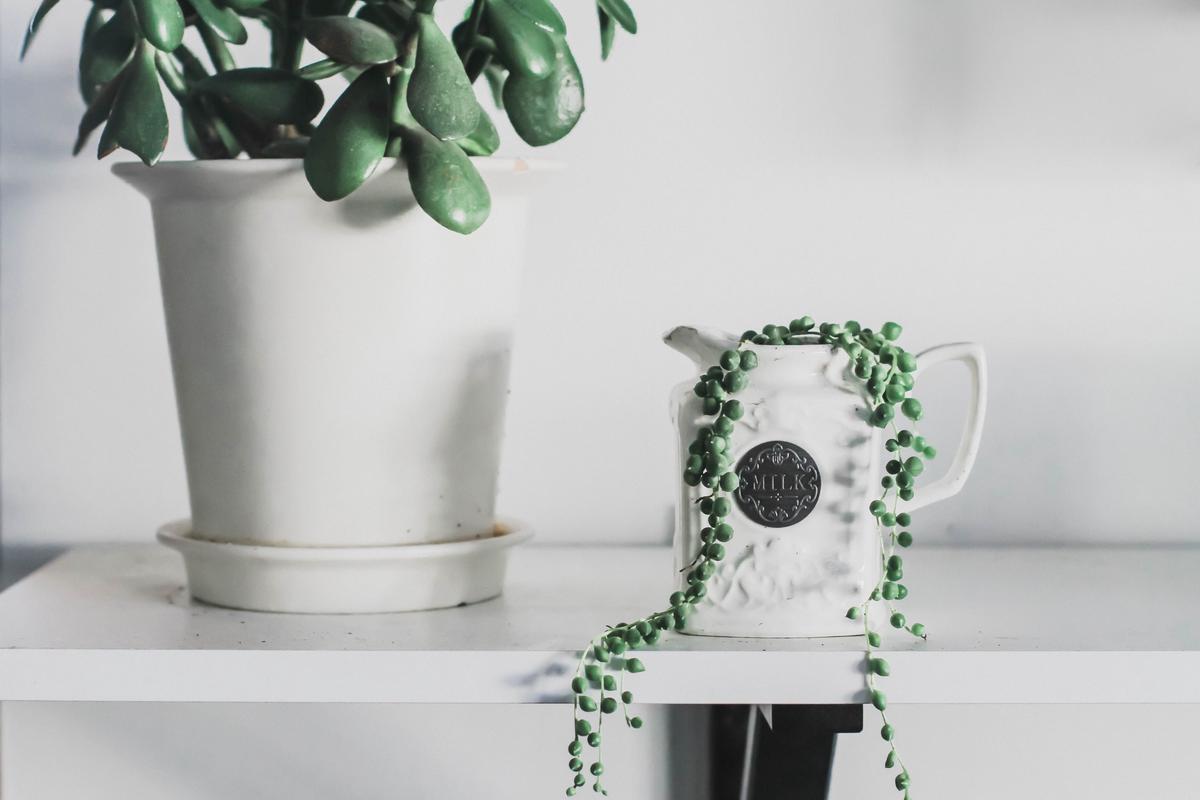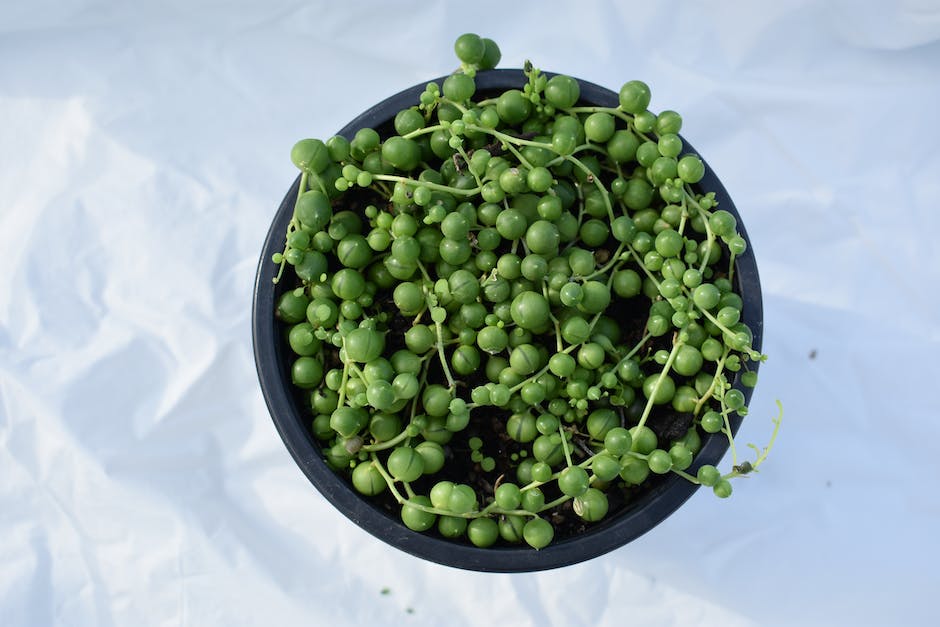Propagating String of Pearls Plant: A Guide

Welcome to the fascinating world of propagating your very own string of pearls plant. This stunning succulent, initially discovered in Southwest Africa, is known for its strikingly beautiful tendrils laden with unique pea-like beads. With the fair understanding of its growth patterns and ideal environment, even a novice gardener can bring a new string of pearls plant to life. This process not only expands your indoor garden, but it also gives you abundant satisfaction that comes from nurturing life. In this uninhibited journey, you will learn about the strategic process of cultivating new sprouts via cuttings from a mature plant along with the patient nurturing they require to establish into a thriving plant.
Understanding the plant
Welcome, dear plant enthusiasts, to another edition of Plants for Your Place, where the love for all things green and leafy thrives! Ready to take a dive into the world of succulent plants? Excellent! Let’s introduce the magnificent String of Pearls plant and unravel the mystery behind its key characteristics!
An absolute jewel in the succulents’ world, the String of Pearls, scientifically known as Senecio rowleyanus, holds a definitive charm with its abundant, pea-like leaves and cascading vines. But what sets it apart, and why is this emerald gem considered a must-have for plant lovers?
Firstly, its unique appearance is worth noting. Unlike the typical succulent, the String of Pearls presents an intriguing sight with its string-like stems laden with round, pearl-like leaves. This makes it a perfect choice for hanging baskets, where it can sprawl and drape elegantly.
Then, there’s the plant’s resilience. Despite its delicate-looking beads, the String of Pearls is tough as nails! It’s a true succulent, storing water in its round leaves, which enables it to withstand periods of drought. For people keen on low-maintenance plants, this is a prized trait.
Moreover, what makes a String of Pearls plant special is the unexpected joy of delicate, brush-like white flowers. These occasionally bloom amidst its pearl-studded vines. Coupled with a lush cinnamon-like scent, these surprise flowers are an engaging delight for both visual and olfactory senses.
Now, onto the crux: why is it crucial to understand these traits?
A plant’s characteristics aren’t merely for identification purposes. They dictate the specific care this plant requires to thrive. Knowing the String of Pearls stores water in its leaves, for instance, clearly signals the need for careful watering. Overwatering might cause the leaves to burst and result in root rot, a common problem for succulents. Hence, with this knowledge, watering can be adjusted to ensure the plant’s longevity.
Similarly, understanding its propensity for cascading growth informs choices in pot placement and selection. With their quick decorative growth, these pearls ideally need a high perch or hanging basket to sprawl over.
Lastly, appreciating this plant’s surprise blooming nature discerns an established String of Pearls from a stressed one. Lack of flowering signals a need for adjustment of conditions like sunlight, water, or temperature.
In essence, to nurture a String of Pearls successfully, it is vital to understand its distinct characteristics. Elevating gardening techniques based on these traits will not only keep your plants happy but also ensure a thriving and visually enticing indoor jungle. After all, isn’t that the ultimate satisfaction for a hobbyist plant keeper?
Happy Planting!
Image:

Propagation through cutting
The Magic of Propagation: String of Pearls Made Easy
Revolutionize your indoor garden with a pride and joy plant, quite like the ebullient String of Pearls. Mesmerizingly unique with its abundance of small, round pearls cascading down long, skinny stems, the String of Pearls is a refreshing departure from your regular houseplant. But, wait till you hear this – it’s effortless to propagate! Yes, that’s right.
Propagating String of Pearls offers the incredible opportunity to multiply your indoor succulent delight without costing a dime. A straightforward task, propagation ensures you have an unending supply of these stunning houseplants that will invariably leave your guests second guessing. And guess what? The lineage traces back to the same original plant. Here’s how to get it done.
Begin by identifying healthy strings with plenty of pearls. The secret to successful propagation lies right here. Strings with full pearls indicate good health, and these are perfect right from the word ‘go’. Cut a healthy 3-4 inch segment from an existing plant. Remember, always make your cut just above a leave node – that spot where new growth shoots out.
Once you’ve got your cutting, it’s time to let it callous. Wondering what that means? Callousing prevents the succulent cutting from absorbing too much water and rotting after being planted. Let the cut end of your segment dry for a couple of days until it forms a protective scab – that’s the callous. If this sounds a little counterintuitive, just imagine succulents in their natural habitat. They’re accustomed to dry, arid conditions, so this step is of utmost importance.
Next up, planting the calloused portion. Prepare a small pot with drainage holes and fill it with one-part potting soil and two parts perlite. This combination ensures a free-draining, loose mix that succulents adore. Simply place the calloused end into the soil mix, making certain that some of the pearls are touching the surface. It’s contact with the soil that triggers root growth, ensuring your new String of Pearls takes off in no time.
Your propagated cuttings need light, but not too much of it to start with. Place the pot in a location with bright, indirect light – a shady windowsill or under a porch are excellent choices. Ensure to water sparingly, just maintaining a slightly moist soil mix until new growth appears.
Once your String of Pearls begins sprouting new pearls, the transition from ‘cutting’ to your very own ‘plant’ is complete. Now you can increase waterings and gradually expose your new plant to more light. Growing intervals between watering are crucial, allow the soil to dry out completely between drinks – these beauties are feast or famine types.
Happy Propagating! Harnessing the unique joy of watching your very own String of Pearls sprout takes indoor plant cultivation to a new level. Cultivate that green thumb, propagate the marvel, and watch your indoor jungle pulse with vitality. And meanwhile, let your string of new pearls intrigue, amaze and enchant with its delicate charm.

Caring for the new plant
Nurturing a Freshly Propagated String of Pearls
One of the unique joys of botanical hobbies is nurturing fresh life and watching your beloved String of Pearls plant burgeon from a mere cutting to a thriving mother plant. Having successfully performed the propagation process, it’s time now to focus on the critical care post-propagation to ensure that your new plant grows into a mature, pearl-laden beauty.
Let’s dive right in and discover the key aspects of looking after a freshly propagated String of Pearls plant.
- Starting with the Right Medium
- Stay Rooted
- Playback Substantial Role – Humidity
- Light, But Not Direct
- Hydrate but Overwater Never
- The Patience Pays Off
Planting your propagated cutting in the right medium is indispensable for success. So, how do you choose the right one? An ideal propagating medium for String of Pearls consists of a well-draining succulent or cactus mix. Incorporate pumice or perlite to improve drainage further.
Before placing the cutting in your chosen medium, make sure the calloused end is pointing down, allowing the roots to grow unhindered. Bury about an inch of the stem in the soil, which will eventually develop roots and strengthen the plant’s base.
Maintain an adequate humidity level around the plant, particularly crucial in the beginning stages of propagation. A clear plastic bag can be utilized to make a mini-greenhouse around the propagating plant, fostering a moist environment suitable for root growth. It’s essential to monitor to avoid excess humidity, as it may lead to rot.
Though succulents love the light, your propagated String of Pearls will experience a better transition when placed under bright indirect light instead of direct sunlight. This preventive measure shields the young and vulnerable plant from possible sun-scorch damage.
When it comes to watering, balance is key. Though String of Pearls have the innate capability to store water, they also run a risk of rot if watered excessively. During the initial weeks, lightly mist the plant every few days, maintaining some soil moistness but ensuring it’s not soaking wet. Once the plant starts showing signs of growth, regulate the watering routine similar to an adult plant.
Remember, patience is a critical factor in any kind of gardening, but particularly so when dealing with fresh propagations. It may take up to a few weeks before you see signs of root and new growth. Eventually, your hard work and dedication will pay off, with you getting to witness the miraculous transformation of a humble cutting into a lush, full-bodied String of Pearls plant.
Growing a propagated String of Pearls plant can be one of the most satisfying and rewarding factors of botanical hobbies. As you adhere to these nuanced care instructions, remember, every plant breeds at its own pace. It might require some tweaks and adjustments, but the resultant thriving plant will make it worth every effort.

With these tips and practices in mind, caring for your newly propagated string of pearls plant transitions from a challenge to a delightful experience. Remember, the infancy stages of growth are paramount and demand your considerate attention in terms of providing adequate water, light, and consistent temperatures. Garden enthusiast or not, anyone can appreciate the captivating aesthetics a string of pearls can offer. Reveel in the joy of seeing your propagated plant grow and thrive, and before you know it, presented to you is a spectacle of tumbling pearls trailing down your favorite window. Who knows? Propagating a string of pearls might just foster a lifelong passion for horticulture with all its gratifying moments.



